By Tom Wintaugh | September 18, 2023

See why top ecommerce brands use Miva’s no-code platform to run
multiple stores, manage massive catalogs, and grow their revenue.
According to the most recent TrustPilot “B2B Buying Disconnect” Report, virtually all B2B buyers now want some or all of their online shopping experience to be self-service. Self-serve B2B is a continuation of the “B2C-ification” of B2B ecommerce trend, which describes the increasing preference of professional buyers for user-friendly, interactive, and seamless UI enjoyed by retail ecommerce shoppers.
Almost 100 percent of B2B buyers report that they prefer self-service ecommerce features. This is in stark contrast to traditional, pre-digital methods for selling wholesale. Historically, B2B sales relied upon a conventional communication techniques, like cold calls, mailed physical catalogs, and ample direct management of accounts by reps. Today’s buyers prefer less contact with ecommerce teams and more direct, interactive control over their shopping experience.
Main findings from the TrustPilot report:
1. B2B buyers have a greater preference for using an ecommerce website than interacting with sales reps.
2. Pricing is the #1 feature buyers want to access by self-service.
3. If product demos require contacting a sales rep, buyers are 40% less likely to make a purchase.
This type of feedback makes it clear that B2B shoppers want total access to all of the information they need to guide purchasing decisions. Ecommerce websites which afford self-service options for pricing, demos, and account info make it easier for prospective buyers to complete a purchase without any additional interaction or resources needed. The trend also benefits merchants, who require less bandwidth to shepherd purchasing when most account info is self-serve.
A B2B self-serve "portal" is any ecommerce website that facilitates specific answers and services for individual B2B buyers, after logging into the site. Self-serve portal features and services might include any typical buying and product information, such as the following:
Allowing accounts to access and self-manage this type of data can be a huge savings for customer service resources, while simultaneously providing a very personalized shopping experience which empowers customers to make decisions (and purchases).
Can your B2B buyers “test-drive” your products by seeing how they will look and perform in the real world? Can they perform product demos on their own, using automated site tools? Giving customers the showroom experience, with visual tools to help configure attributes, see relative size, and experience use cases in action is an excellent way to help customers learn more about products. We wrote more about how digital showrooms and product visualizers can improve sales results here.
When appropriate, incorporating visual tools which allow shoppers to change product details like color or trim level, see the changes live, and then drop the configured product into a cart for purchase is an excellent way to drive conversions.
Customer reviews are an important part of a self-serve B2B sales process, because thorough reviews and case studies can act as a virtual salesperson. By browsing reviews, a buyer can fill in more details about products, and use social proof to inform their purchasing decisions—factors which might previously have been handled by a live rep. It’s important to index review content and tag with relevant product search facets, so users can easily find the content they are looking for.
Buyers now favor user-friendly interfaces that allow for autonomous management of their shopping experiences, including easy access to pricing, product demos, and reviews. To stay competitive, B2B sellers should consider offering robust self-serve options that allow for greater personalization, more efficiency, and a more direct pathway to purchase.

Katy Ellquist, Miva’s Digital Marketing Strategist, is an accomplished writer, marketer, and social media analyst who has created sophisticated content campaigns for a broad range of professional clients. She brings to Miva a complex understanding of ecommerce trends and techniques, building upon extensive digital agency experience and a prior role as direct liaison to Miva’s top accounts. Katy is a regular contributor to the Miva blog, covering essential ecommerce topics like design & development strategy, site optimization, and omnichannel selling, with the goal of increasing the actionable knowledgebase of the entire Miva community.
Love it? Share it!
No worries, download the PDF version now and enjoy your reading later...
Download PDF